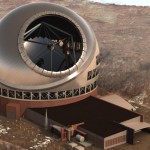By now you should have heard… The approval made national and international news. The Hawai’i state Board of Land and Natural Resources (BLNR) has granted final approval to the Conservation District Use Permit. This marks the end of the contested case hearing, essentially the final legal hurdle for construction of the Thirty Meter Telescope.

It is in reading the decision that you can learn much about the process. The news articles rarely cover anything beyond superficial details. The legal documents cover the arguments against building TMT atop Mauna Kea in great detail. The decision just published includes a legal response to all of the issues raised including references to each applicable statute and precedents.
An electronic copy of the decision document was passed along to me by a friend (Thanks!!). Very interesting reading, I spent a while reviewing it over the weekend. For anyone interested I have posted the document below.
Much of the document addresses the legal process that is applicable under Hawaiian law. I have to admit skimming much of the material dealing with the legal tests that apply to the case. The legal language gets thick here and presupposes a much more detailed knowledge of case law than I can hope to possess.
It is in the balance of preservation versus reasonable use of public lands in which I see real issues in using the summit of Mauna Kea. To this end section III B of the conclusions makes very interesting reading…
167. Thus, the public trust doctrine requires a balancing between “1) protection and 2) maximum reasonable and beneficial use.” Id. The State must apply a rule of reasonableness in which environmental costs and benefits are balanced against economic, social, and other factors.
The conclusions given in the document are unequivocal, granting that the uses proposed for the TMT site are consistent with the uses of the conservation district.
175. Different valid public trust uses for the same land must be balanced. Native Hawaiian uses have been recognized as valid public trust uses. Waiahole, 94 Hawai‘i at 137, 9 P.3d at 449. The evidence in this proceeding demonstrated a dearth of native Hawaiian uses of the specific location of the TMT Project, and further demonstrated that, as to the summit region of Mauna Kea in general, astronomy and native Hawaiian uses are able to, and do, co-exist, and that building the TMT Project will not curtail or restrict native Hawaiian uses.
The section directly addresses the religious objections to the use of the summit region. In Hawai’i there is a great deal of case law pertaining to the conflict between traditional cultural and religious practice versus modern society. This is a legacy of decades of social battles and a sometimes sad history of colliding cultures.
206. Belief in an area’s religious sacredness does not make development of that area an unconstitutional infringement of religion, and does not give the believer a legal right to stop the development.
I found a number of the comments about religious practices and the law very interesting. Particularly with respect to balancing the needs of various parts of the community. Judging by this, the case law appears to agree with my own feelings on the issue. That allowances can and should be made for religious and cultural uses, but that those demands should not be an absolute veto over other uses of the land, that reasonable compromises can be made.
I admit to cherry picking the material quoted here. I hoped to capture the sense I got from reading the original decision in a few paragraphs, but I would really recommend that anyone truly interested peruse the source document for themselves.
There may be additional lawsuits filed, the petitioners have the option of appealing to federal circuit court. I do not expect those lawsuits to proceed very far. It is apparent to anyone following the issue that all of the legal arguments to be made, have been made, the project has been approved through the proper process.
231. Moreover, as made clear from the facts recited above, Petitioners have received an abundance of process. They have no basis to claim that they have been deprived of due process, and if they assert any such claim, it is rejected.
Thus it appears that the TMT will be built atop our mountain. There are currently thirteen instruments on Mauna Kea, the TMT will make fourteen. Not for long however, the Caltech Submillimeter telescope is scheduled to be decommissioned and the site restored starting in 2016. Thus the number of instruments on the mountain will remain the same in the long run. It is also possible that the coming decade will see the retirement of further instruments on the mountain as financial realities force the astronomical community to concentrate its efforts.
I am looking forward to the completion of the TMT, another chapter in humanity’s quest to explore the universe and answer the biggest questions of all. Many of the things discovered by Keck were completely unforeseen when it was conceived and built, one can only guess at what will be discovered by the next generation of large telescopes.

